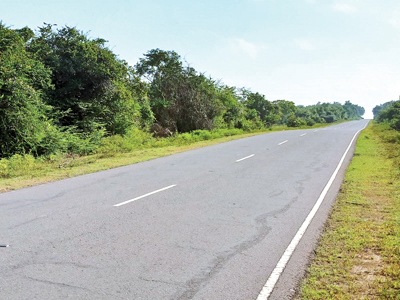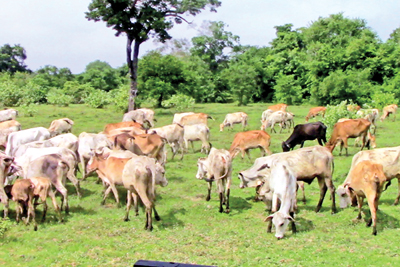Just before sunset, planter and hunter Shelton Agar, a Britisher, peered through the bushes in a scrub jungle close to the Punani-Batticaloa road bordering the historic ancient city of Polonnaruwa waiting for his target, a notorious man-eating leopard that killed and ate an estimated 20 people.

The present road at Punani transformed from a leopard’s haunt of human slaughter to an expressway
It was somewhere in August 1924 when Agar who eliminated several rogue elephants in the Batticaloa district sat by the remains of what was said to be the last human victim, a postal peon named Manikkam who was on his way home when the man eater of Punani followed concealed in the bushes and sprang on him in a perfect leopard ambush.
End of leopard terror
Agar had noticed the big cat a few metres away and fired his rifle only to miss. But a few days later the dreaded saga of the island’s most notorious man-eating leopard came to a relieving end when Agar bagged his kill.
Today the story of the man-eating leopard of Punani is merely confined to history as it should be and the road where the beast held sway has been transformed from what was a cart track not more than seven feet wide to a major carpeted road connecting Polonnaruwa with Batticaloa a distance of 94 kilomteres.

What remains of the notorious man-eater of Punani at the
Colombo Museum of Natural History
Not many motorists hammering down may know that the road was once the haunt of the man eater at a time another leopard branded the man-eater of Rudraprayag in India was responsible for the deaths of over a hundred people before it was shot by Indian-born British hunter and naturalist Jim Corbett in whose memory is named a National Game Sanctuary.
To the student of history, walking down the road at Punani today can still bring out an eerie feeling of what it was like a century ago when villages and travellers feared for their lives as the leopard stalked and ambushed his victims. Stopping for moments to admire the beauty of the forest on either side of the road with only the sound of a passing vehicle is a reminder of what it was like when Punani was a dreaded place. But Punani today has a verdant beautifully laid out inter-changing railway station of picture postcard serenity nestled well within the forest so naturally quiet that nothing can be compared to it.
Then and now

A skull of a herbivore lies in the forests where the man-eater once prowled
Punani at the time had no resident community and the people who travelled in and out were tobacco cultivators, loggers and railway workers unlike today where a few houses lie sprawled across on the opposite side of the road safeguarded by an electric fence to keep away marauding elephants on a nighttime visit.
Bandara, an elderly man who knew the man-eating leopard’s tale inside out told the Sunday Observer last week that the number of kills made by the ferocious feline creature was not as it is thought to be and that Manikkam was the 11th and last human to fall prey before Agar eliminated the leopard that is now an exhibit at the Colombo National Museum and looks so frightful and it was alive in the flesh.

From the days of stalking terror to peaceful times as cattle graze in Punani today
Agar by his own admission took out five other leopards mistaking the animals to be responsible for the human deaths until he shot and examined the culprit’s furred body that had knife marks of stab scars inflicted on it by his victims in a desperate and futile attempt to survive. What is unknown is whether any of the road users at the time managed to successfully fight off the leopard as Punani became a place of slaughter.
History records it that the man eater of Punani developed a taste for human flesh by accident when it mistakenly pounced on a boy seated under a tree taking care of his herd of cattle that today graze on patches on green pastures on either side of the road undisturbed.
For the record there isn’t a place anywhere else in the island like Punani with its calm beauty that is as both fearsome as well as serene as it is today.







